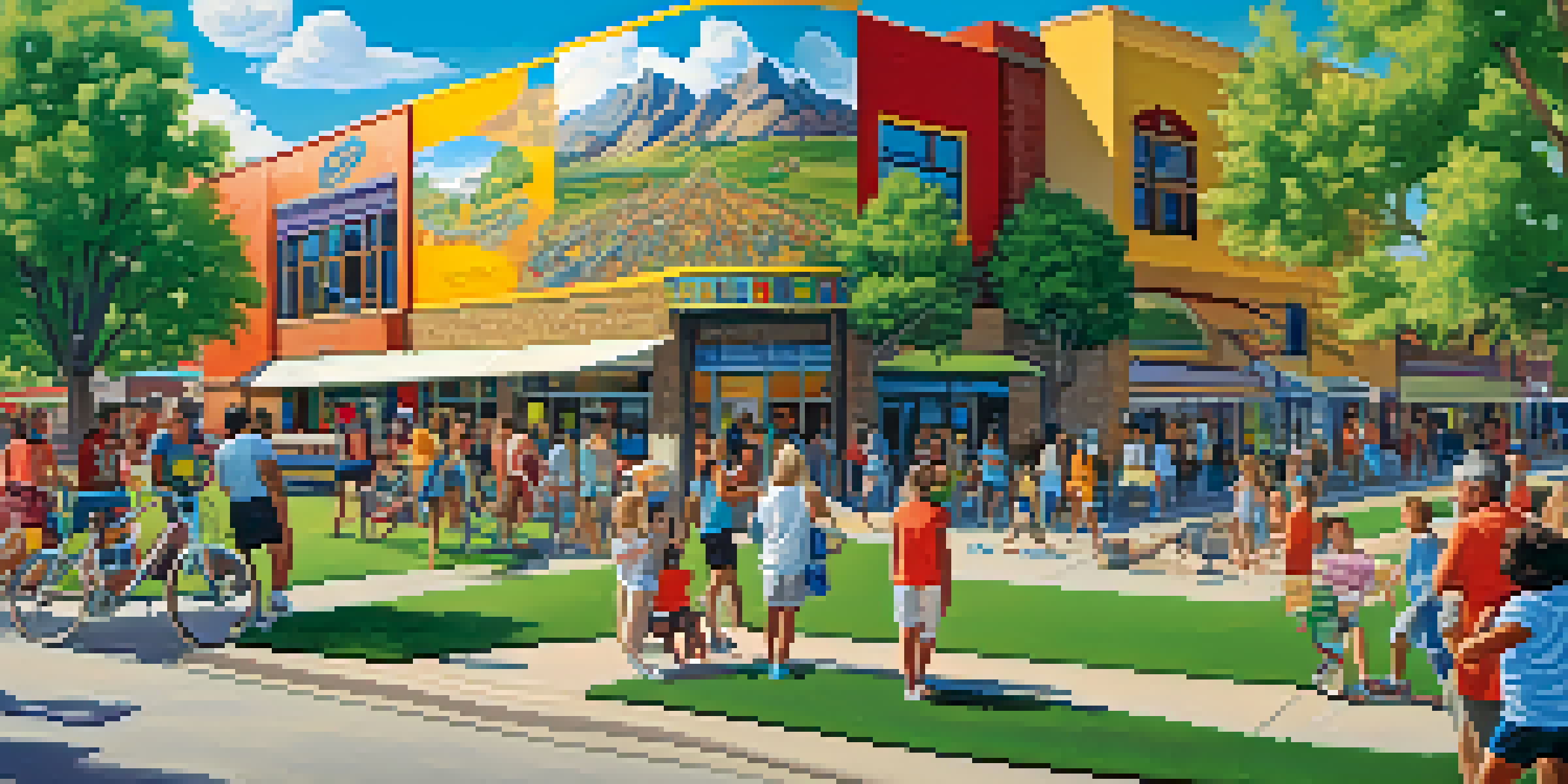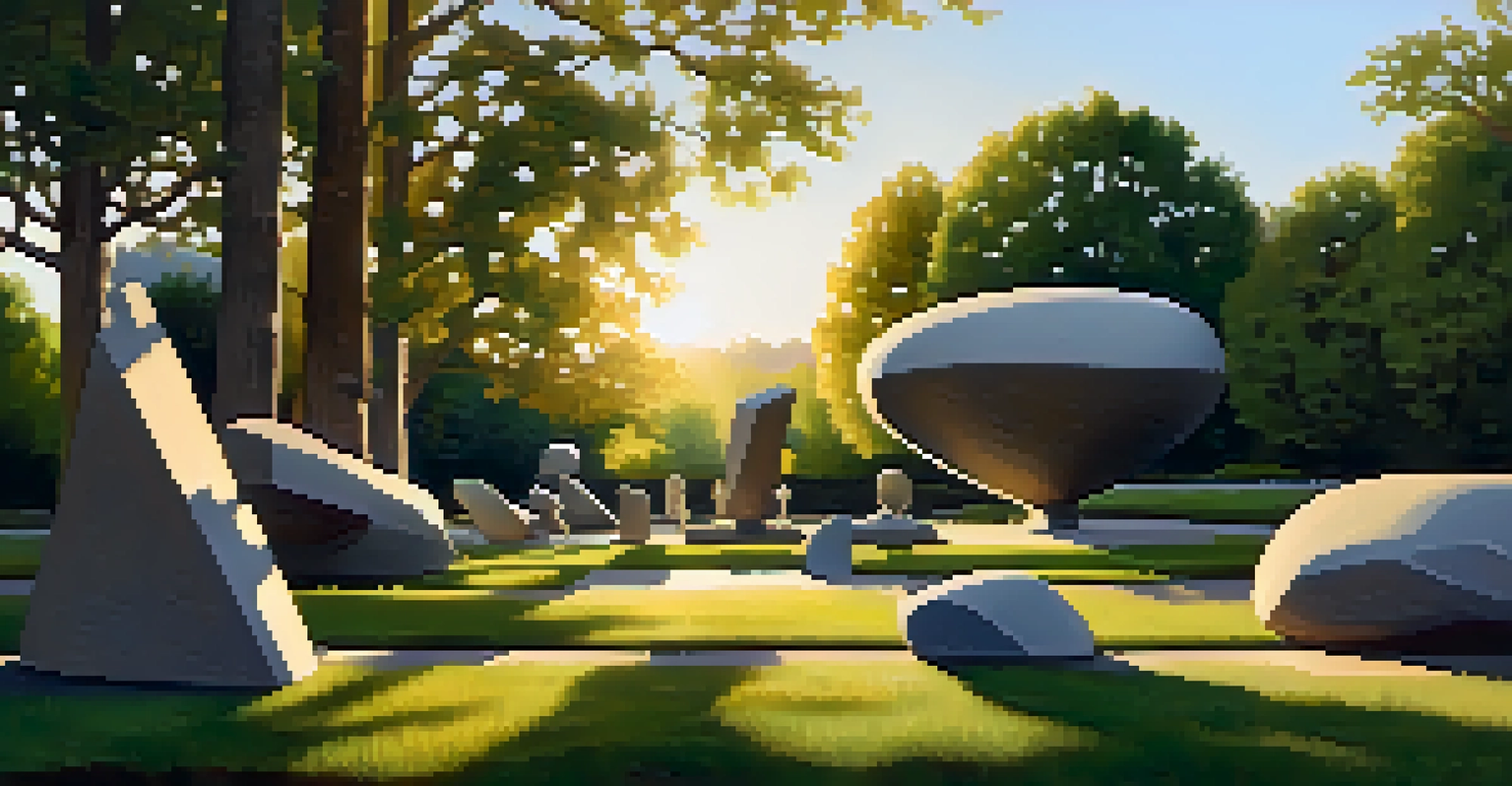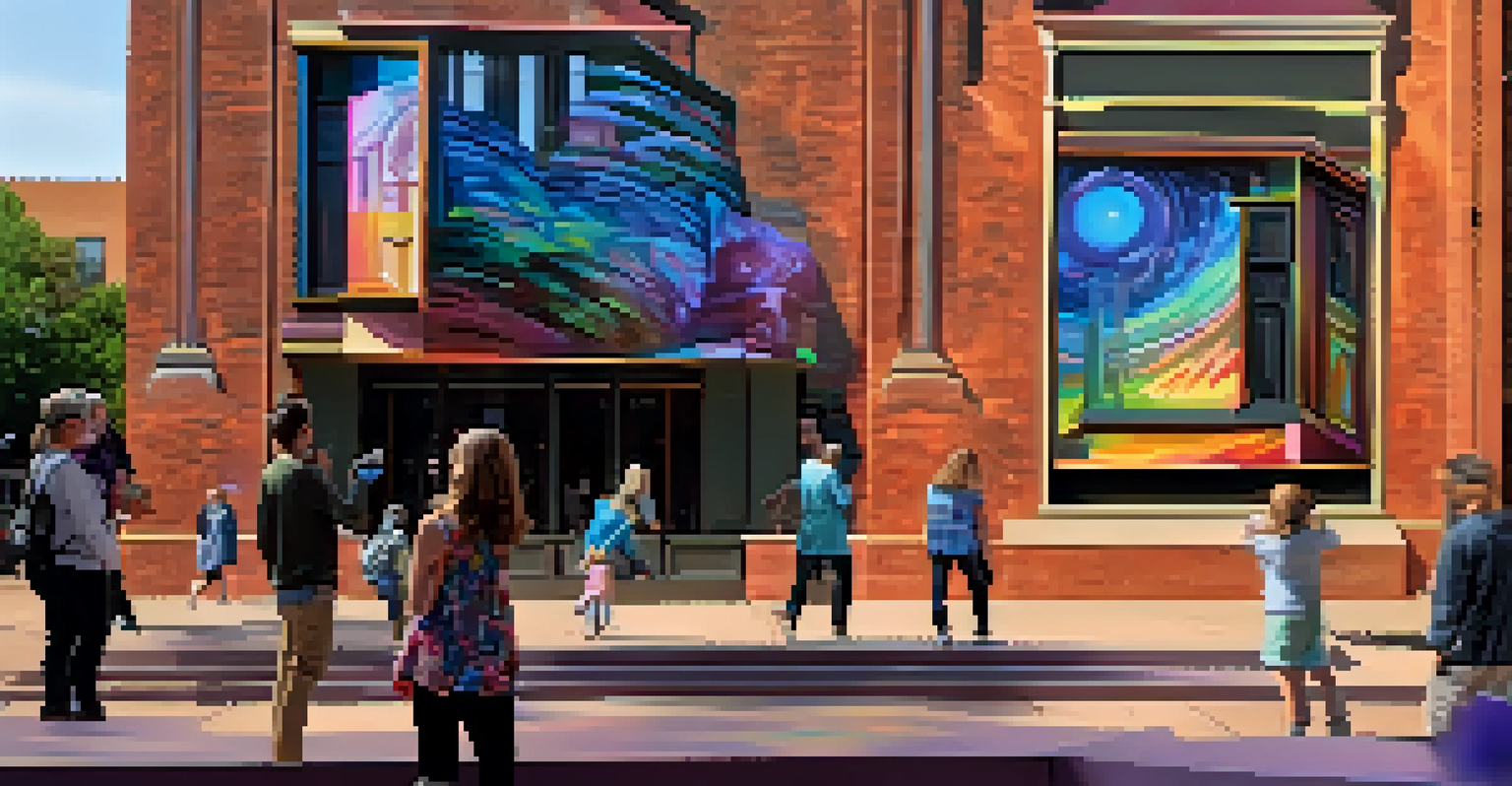The Role of Public Art in Boulder's Cultural Landscape

Understanding Public Art and Its Importance
Public art refers to artworks that are accessible to the public, often displayed in outdoor spaces. This can include sculptures, murals, and installations that invite community interaction. In Boulder, public art plays a crucial role in enhancing the city’s aesthetic and cultural appeal.
Public art is a way to create a dialogue between the artist and the community.
Beyond mere decoration, public art serves as a reflection of the community's identity and values. It can tell stories about the city's history, celebrate local cultures, or spark conversations about contemporary issues. Engaging with these artworks can foster a deeper connection among residents and visitors alike.
Moreover, public art contributes to the vibrancy of public spaces, making them more inviting and enjoyable. Just as a well-placed tree can beautify a park, a striking mural can transform a dull wall into a captivating focal point, encouraging people to gather and interact.
Boulder's Rich History of Public Art
Boulder’s public art scene is deeply rooted in its history, reflecting the evolution of the city over the years. From the early days of settlement to the present, artists have found inspiration in Boulder's stunning landscapes and diverse communities. This rich history has paved the way for a thriving artistic culture.

Landmarks such as the Boulder Museum of Contemporary Art and the annual Boulder Arts Festival highlight the city’s commitment to fostering local talent. These institutions not only showcase work but also encourage community involvement in the arts, amplifying the voices of local artists.
Public Art Enhances Community Identity
Public art reflects the values and history of a community, fostering connections among residents and visitors.
Historical pieces, such as the iconic 'On the Trail' sculpture, serve as reminders of Boulder's past while inviting conversations about its future. As new generations of artists emerge, they continue to build on this legacy, infusing the city with fresh perspectives and innovative ideas.
Enhancing Community Engagement Through Art
Public art plays a vital role in bringing communities together, creating shared experiences and fostering connections. Interactive installations and community murals often involve local residents in the creative process, encouraging collaboration and dialogue. This engagement not only enriches the artwork but also strengthens community bonds.
Art is not what you see, but what you make others see.
Events like Boulder’s Open Studios allow artists to showcase their work while inviting the public to participate in workshops and discussions. These opportunities help demystify the artistic process and encourage individuals to explore their own creativity. As people engage with art, they become more invested in their community.
Furthermore, public art can serve as a catalyst for social change, addressing issues such as diversity, environmental sustainability, and social justice. By sparking conversations and challenging perceptions, these works can inspire action and promote a more inclusive community.
Public Art as a Tourist Attraction
Boulder’s vibrant public art scene not only enriches the lives of locals but also attracts visitors from around the world. Tourists often seek out unique experiences, and public art provides an accessible way to explore the city’s culture. From iconic sculptures to colorful murals, these works create a visual narrative of Boulder’s identity.
Art walks and guided tours highlight the significance of these pieces, making them integral to the city's tourism strategy. Visitors are encouraged to share their experiences on social media, further amplifying Boulder’s reputation as an artsy destination. This organic promotion can lead to an influx of visitors eager to experience the city's creative spirit.
Tourism Boosted by Public Art
Boulder's vibrant public art scene attracts tourists, contributing to the local economy and showcasing the city's creative spirit.
Moreover, the economic impact of public art should not be underestimated. By drawing tourists to the area, public art contributes to the local economy, benefiting businesses and providing new opportunities for artists. It’s a win-win for everyone involved, showcasing the power of art to enhance a community.
Art in Public Spaces: A Source of Inspiration
Public art transforms ordinary spaces into extraordinary experiences, inspiring those who encounter it. Whether it's a thought-provoking installation or a vibrant mural, these works can evoke emotions, provoke thought, and spark creativity. They encourage viewers to consider new perspectives and engage with their surroundings in meaningful ways.
In Boulder, the integration of art into public spaces invites residents and visitors to pause and reflect. For example, the 'Sculpture Garden' in Central Park not only beautifies the area but also serves as a gathering spot for artistic dialogue. These moments of inspiration can lead to a greater appreciation for the arts and the community as a whole.
Moreover, public art can inspire future generations of artists. Young people who encounter creative works in their everyday lives are more likely to see art as a viable career path. By fostering an environment that celebrates creativity, Boulder cultivates a culture of innovation and artistic expression.
The Role of Technology in Public Art
As technology continues to evolve, it has begun to play a significant role in the world of public art. Digital installations and augmented reality experiences are becoming more common, allowing artists to push the boundaries of creativity. In Boulder, these innovations provide a fresh way to engage with audiences, blending the physical and digital worlds.
For instance, projection mapping can transform a building’s facade into a canvas for animated art, creating a dynamic visual experience. This fusion of art and technology not only captivates viewers but also encourages interaction and participation. As audiences become more immersed in these experiences, the impact of public art becomes even more profound.
Future Focus on Inclusivity and Sustainability
Boulder's public art future emphasizes diverse voices and eco-friendly practices, enriching the community's cultural landscape.
Additionally, social media platforms serve as a powerful tool for artists to reach wider audiences. By sharing their work online, artists can engage with communities beyond Boulder, fostering a global dialogue about their creations. This connectivity opens up new opportunities for collaboration and inspiration, ultimately enriching Boulder’s cultural landscape.
Future Directions for Boulder's Public Art Scene
Looking ahead, Boulder's public art scene is poised for continued growth and evolution. As the city embraces diversity and inclusivity, there is a growing emphasis on representing a wider range of voices and experiences. This focus on community-driven projects ensures that the artwork reflects the rich tapestry of Boulder's residents.
Collaboration between local artists, businesses, and city officials will be crucial in shaping the future of public art. By fostering partnerships, Boulder can create more opportunities for artists to showcase their talent while enhancing public spaces. Such collaboration can lead to innovative projects that resonate with community values.

Furthermore, as awareness of environmental issues rises, sustainability in public art will likely become a priority. Artists may explore eco-friendly materials and practices, creating works that not only beautify the city but also promote environmental stewardship. This commitment to sustainability will further enrich Boulder's cultural landscape.